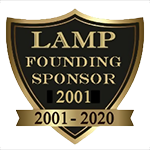eMoviePoster.com
Auction History Result 3y309 GOLDEN CITY Belgian 1942 Veit Harlan's Die goldene Stadt, Kristina Soderbaum! Date Sold 2/12/2019Sold For: Login or Register to see sold price. An Original Vintage Theatrical Folded Belgian Movie Poster (measures 11 1/2" x 16 1/2" [29 x 42 cm]) (Learn More) Die Goldene Stadt (released in English-speaking countries as "The Golden City"), the 1942 Veit Harlan German family relationship poor-girl-goes-to-the-big-city melodrama (based on 'Der Gigant' by Richard Billinger; about the daughter of a rich man who lives in the country, who wants to go to "the golden city" [Prague], and her father forbids her, and she goes anyway and lives with her aunt, and then her evil cousin gets her pregnant, and then he leaves her when he finds out her father has disinherited her, and she commits suicide) starring Kristina Soderbaum (the wife of director Veit Harlan, and she starred in most of his movies after they were married), Eugen Klopfer, Annie Rosar, Liselotte Schreiner, Paul Klinger, Kurt Meisel, and Rudolf Prack. Note that there are many interesting aspects about this movie! First, this was a Nazi movie that was released in occupied France, and while it is not a movie that glorifies Nazism, it was made by those who made the worst Nazi movies (see below). Also note that Josef Goebbels ordered the ending of this movie changed (originally, the girl returned to her father, but Goebbels wanted her dead for having become pregnant out of wedlock!). Also, Goebbels did not want Joachim Gottschalk in the movie, even though he was a much loved German actor, and he had his scenes re-shot with Paul Klinger. What did Goebbels have against Gottschalk? Shortly before the Nazis came to power, he had married a Jewish woman and had a son. He was so popular with the public that the Nazis tolerated his Jewish wife and son, but in 1939, Gottschalk took his wife to a Nazi social function, and when Josef Goebbels learned of the incident, he told Gottschalk to leave his wife and child. Gottschalk refused and Goebbels ordered them sent to a concentration camp. Gottschalk took his wife and son, and they killed their son and committed suicide. Goebbels ordered that no mention be made of the incident, but his death was reported in the newspapers anyway, but no one learned the truth of how he had died until after the war! Also, this movie was directed by Veit Harlan, and most of the movies he made during the Nazi era (many starring his wife Kristina Soderbaum) were added to the "forbidden" movies list, because they included some of the most vile movies ever, including "Jud Suss". After the war, he was tried for war crimes, but he argued that he had been forced to direct "Jud Suss", but Joseph Goebbels' diary showed that he had been enthusiastic in making it, and the diary said "Harlan did a great job. It is the most anti-Semitic movie"! Yet in 1950, Harlan and Soderbaum were allowed to again make movies, but they only did a few minor ones. It is also interesting to note that Harlan's niece was Susanne Christian, who married Stanley Kubrick, who was Jewish! Note that director Veit Harlan was one of the most infamous of the Nazi film directors, directing Jud Suss and many other virulent anti-Jewish Nazi movies during World War II. After the war, almost ALL of his movies were banned, not just the anti-Jewish ones, and he was put on trial for war crimes. But in 1950, after several trials, he was set free, and in 1951, he resumed making movies, making a dozen of them until his passing in 1964. NOTE: Click on linked names to see a biography. If you know who did the art (if any), please let us know. Important Added Info: Note that this poster is printed on the back of part of another poster. Why is this? During World War II, there were massive paper shortages in Belgium. Where Belgian movie posters had previously been approximately 23" x 32", there was such a shortage of paper that not only did they often have to print them on the back of other posters or maps, but during World War II, the size of the posters shrank dramatically, with some of them as small as 11" x 15". This situation continued even after World War II, until around 1946 or 1947, when they began making Belgian movie posters in a size of roughly 14" x 22", which became the standard size, and continued for decadesters like these that are from during World War II or immediately after, and which are printed in a small size (often on the back of other posters or maps) are INCREDIBLY rare (surely they did not print many, and surely many of them were soon recycled themselves. Condition: very good. Learn More about condition grades 

Postal Mailing Address:
Bruce Hershenson, P.O. Box 874, West Plains, MO 65775. (For our UPS or FedEx address, click here) phone: +1 417 256-9616 fax: +1 417 257-6948 E-mail: Contact Us Hours of Operation: Monday - Friday 8:30 AM - 12:00 PM & 1:00 PM - 5:00 PM (CST) |
|||||||||||||






